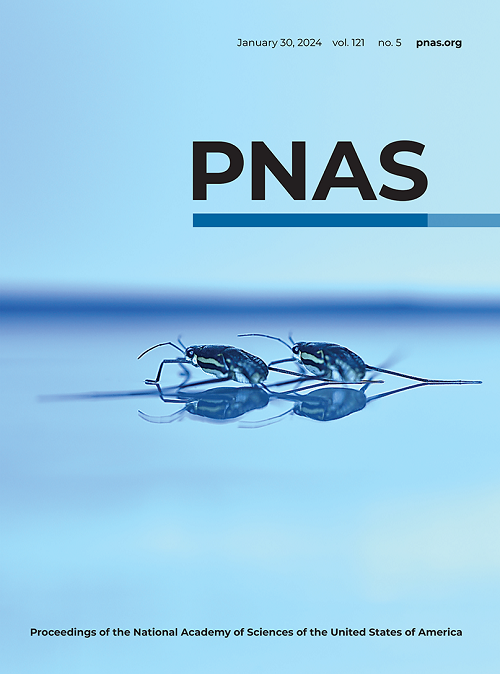硫醚编辑通常会增加罗丹明染料在自标记标签上的光稳定性。
IF 9.4
1区 综合性期刊
Q1 MULTIDISCIPLINARY SCIENCES
Proceedings of the National Academy of Sciences of the United States of America
Pub Date : 2025-07-18
DOI:10.1073/pnas.2426354122
引用次数: 0
摘要
自标记蛋白标签广泛应用于先进的生物成像,其中具有高光子预算的染料优于其荧光蛋白对应物。新的荧光团化学和蛋白质工程都在积极地追求进一步增加染料标记系统的发射光子数。通过仔细研究荧光团的蛋白质微环境,我们提出近端硫醚基团对染料标记系统的光稳定性有负面影响。我们将罗丹明染料在HaloTag、SNAP-tag和TMP-tag3上的光稳定性差异归因于SNAP-tag和TMP-tag3内固有的硫醚键的影响。这种光化学途径使我们进一步设计出具有更高光稳定性的标签。我们首先表明,TMP-tag3.1上的罗丹明染料采用邻近诱导的SuFEx反应,而不是添加巯基丙烯酰胺来取代硫醚加合物,实现了与HaloTag上的配体相当的光子预算。我们进一步证明,通过突变荧光团口袋附近的蛋氨酸,HaloTag: M175L在用红色和远红色罗丹明标记时,通常会使光稳定性提高四倍。通过单分子荧光成像、活细胞荧光成像和电压成像证明了HaloTag修饰的增强。在延时成像过程中,Met的逐渐光氧化导致光漂白速率降低,从机制上支持硫醚途径假说。我们的研究结果表明,自标记标签上的硫醚编辑是提高先进延时成像技术荧光团光稳定性的一般策略。本文章由计算机程序翻译,如有差异,请以英文原文为准。
Thioether editing generally increases the photostability of rhodamine dyes on self-labeling tags.
Self-labeling protein tags are widely used in advanced bioimaging where dyes with high-photon budgets outperform their fluorescent protein counterparts. Further increasing the emitted photon numbers of dye-tag systems is actively pursued by both new fluorophore chemistry and protein engineering. By scrutinizing the protein microenvironment of fluorophores, here we propose that proximal thioether groups negatively affect the photostability of the dye-tag system. We attribute the disparity in photostability of rhodamine dyes on HaloTag, SNAP-tag, and TMP-tag3 to the influence of the inherent thioether linkage within the SNAP-tag and TMP-tag3. This photochemical pathway leads us to further devise tags with higher photostability. We first show that rhodamine dyes on TMP-tag3.1, which employs a proximity-induced SuFEx reaction instead of a thiol-acrylamide addition to replace the thioether adduct, achieve photon budgets comparable to those ligands on HaloTag. We further showcase that by mutating the methionine near the fluorophore pocket, HaloTag: M175L generally gives up to four times enhancement on photostability when labeled with red and far-red rhodamines. The enhancement of HaloTag modification is demonstrated with single-molecule fluorescence imaging, live-cell fluorescence imaging, and voltage imaging. During time-lapse imaging, gradual photooxidation of Met leads to a reduced photobleaching rate, mechanistically supporting the thioether pathway hypothesis. Our findings suggest that thioether editing on self-labeling tags is a general strategy to enhance the photostability of fluorophores for advanced time-lapse imaging techniques.
求助全文
通过发布文献求助,成功后即可免费获取论文全文。
去求助
来源期刊
CiteScore
19.00
自引率
0.90%
发文量
3575
审稿时长
2.5 months
期刊介绍:
The Proceedings of the National Academy of Sciences (PNAS), a peer-reviewed journal of the National Academy of Sciences (NAS), serves as an authoritative source for high-impact, original research across the biological, physical, and social sciences. With a global scope, the journal welcomes submissions from researchers worldwide, making it an inclusive platform for advancing scientific knowledge.

 求助内容:
求助内容: 应助结果提醒方式:
应助结果提醒方式:


